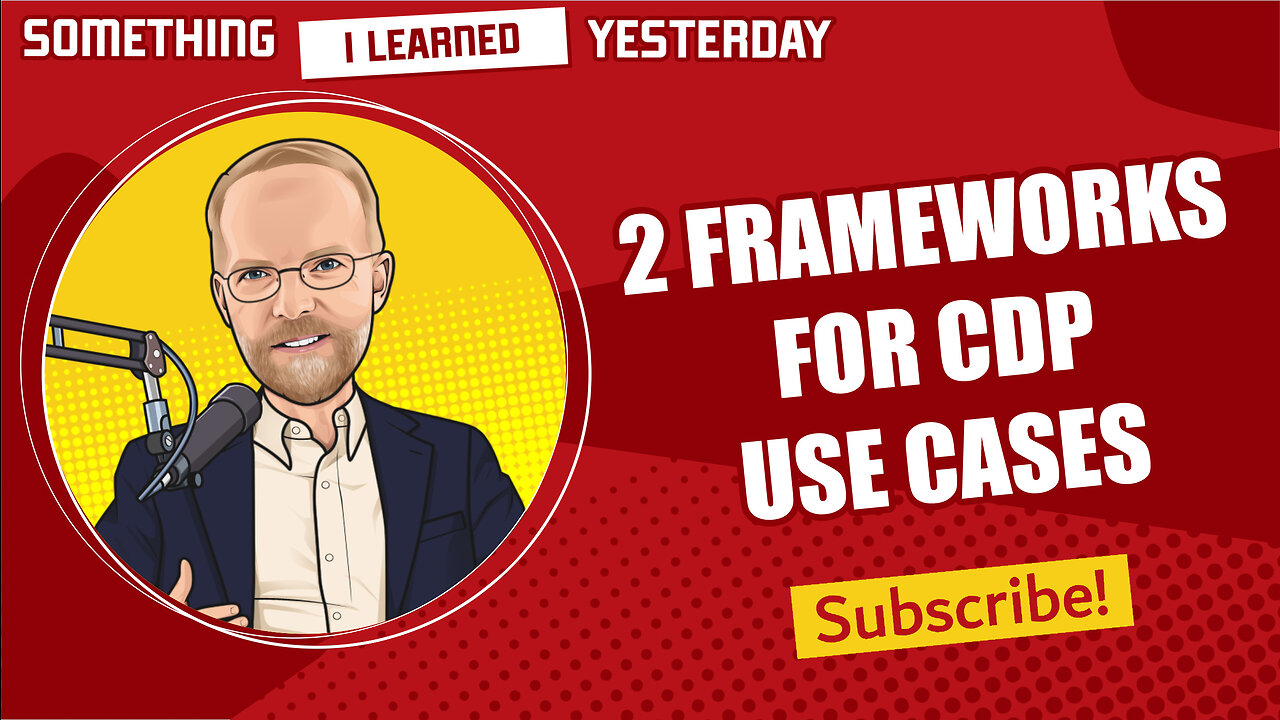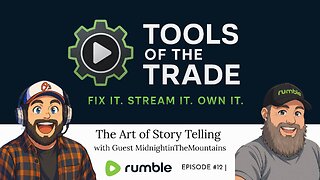Premium Only Content

2 frameworks for CDP use cases
Today is the first of a multi-part series based on a presentation I did at the Martech conference.
When you’re building out a customer data platform you need to focus on your use cases, and in order to build successful use cases you should examine them from two different perspectives: first, from the data you collect from devices, and second, from the perspective of your customers as human beings.
I call these two the device framework and the person framework.
To understand this, let’s back up to some fundamentals. The internet is based on a request and response system. For example, my Android phone sends a request to Krehbielgroup.com, and the web server sends a response. The point is that people don’t visit websites. Devices do.
So let’s walk through the device framework.
1. A device makes a request.
2. That device has activity.
3. You collect identifiers on that device.
4. You try to resolve devices to a person using those identifiers.
There are different use cases for each step of that framework.
For #1, you might target iPads differently than iPhones.
For #2, you can target every device that views content with a particular tag, like “retirement.”
For #3, try to collect identifiers – like IP address, location, usage patterns, or better yet, an email address – that will help resolve to a person.
For #4, try to match all the devices a person uses to a single person.
The device framework is somewhat like the measuring left-brain side of things and the person framework is somewhat like the creative right-brain side of things.
A person is a much more complicated thing than a device, because one person can have many devices and many personas. The person framework goes like this.
1. A person
2. Has many devices
3. Has many identifiers that
4. Resolve to different personas
People try to hide their identity by using different browsers, different devices, incognito mode, etc. Many people also don’t buy into the tech nonsense of “bringing your whole person.” Facebook wants one profile per person, but people compartmentalize their lives. They have a work life and a home life. A professional life and a hobby. They might want to keep their political or social views separate from their professional image.
I’ll go into this in more depth in a later podcast, but for now, just remember that you need to think about devices and people on two separate tracks. Once you’ve been through both of those, re-evaluate your use case to make sure it addresses all the little wrinkles and exceptions and weirdness you discovered by using these two frameworks.
-
 1:32:33
1:32:33
VapinGamers
4 hours ago $5.21 earnedTools of the Trade - EP12 The Art of Story Telling with MidnightinTheMountains - !rumbot !music
23.6K2 -
 3:09:50
3:09:50
SOLTEKGG
3 hours ago🔴LIVE - Battlefield 6 - Going Pro in RED SEC
16.1K1 -
 LIVE
LIVE
Midnight In The Mountains™
5 hours agoThe Midnights Play Arc Raiders | Loot Scoot and KILL | Crypto Wallet up n running GO JOIN THE BETA!
95 watching -
 53:25
53:25
X22 Report
6 hours agoMr & Mrs X - Trump Is Using The Same Tactic As Our Founding Fathers To Rebuild America - EP 17
89K26 -

PudgeTV
3 hours ago🟣 Arc Raiders - Gaming on Rumble | Going Topside w My Daughter’s Husband
14K1 -
 2:05:43
2:05:43
LFA TV
23 hours agoRUMBLE RUNDOWN WEEK 7 with SHAWN FARASH 11.22.25 9AM
148K9 -
 3:23:01
3:23:01
ttvglamourx
3 hours ago $1.15 earnedGLAMOURX VS CALL OF DUTY LOBBIES !DISCORD
18.4K3 -
 LIVE
LIVE
DannyStreams
6 hours agoSaturday Morning Tarky
45 watching -
 1:12:53
1:12:53
Wendy Bell Radio
9 hours agoPet Talk With The Pet Doc
33.3K22 -
 LIVE
LIVE
CHiLi XDD
4 hours agoFF7 Remake | Materia Hunting at its finest!
42 watching